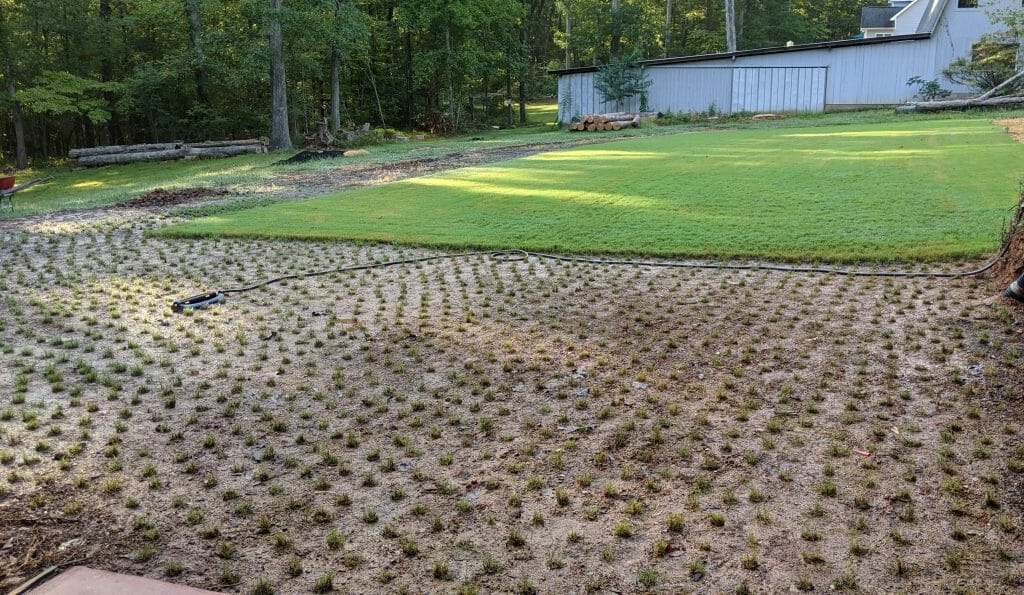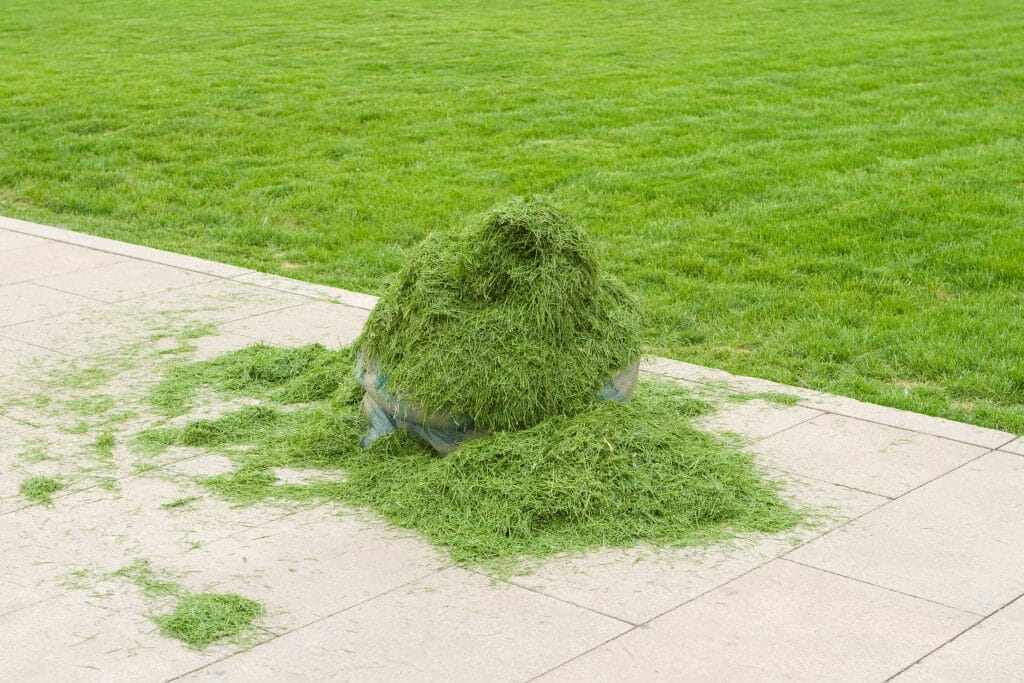
How to plant grass seed on hard dirt? You’ll get the best results if you first work on improving the soil. Unfortunately, this is not the quickest solution but it will ensure that you give your lawn the best possible start. It’s all about creating healthy soil, to grow healthy grass.
Hard dirt can be the result of having a heavy clay soil where the soil particles are bound tightly together. It can also be a result of the soil being compacted by such things as heavy machinery. This can often be the case in new estates where the land has been cleared by bulldozers.
But don’t worry. With a little time and dedication, you can help your soil to become more friable and grow a beautiful lush lawn in the process.
Here are the steps you need to take.
How To Grow Grass on Dirt: 8 Steps
Step 1: Get Your Soil Tested
The first step to improving your soil is understanding its composition. For this you need to get your soil tested in a laboratory. This test will tell you whether you have a very heavy clay soil (is clay soil acidic or alkaline, find out in our article here) and whether it contains any organic matter or sand.
A soil test will also tell you how many nutrients are present in the soil or if your soil has any major nutritional deficiencies.
Once you’re armed with all this information, it’s time to start working on improving your soil.
Step 2: Aerate The Soil
Hard, compacted soil does not have any air pockets that allow water and nutrients to flow through. Therefore, you have to create these air pockets first if you want your grass seeds to grow and develop healthy roots, you can do this by aerating.
One of the best ways to aerate your soil is to use a core aerator. These machines are about the same size as a lawnmower and are usually available to hire at your local garden center or similar.
This aerator will pull out small plugs of dirt to create air pockets as you push it over the lawn area.
For extremely hard soil, you may also need to till it. This helps to break up the top six to ten inches of the topsoil and makes it more workable. You can hire a rototiller to do this job quickly and easily.
Breaking up the soil like this will definitely create more air pockets that will allow the roots of your grass seeds to grow.
Step 3: Add Organic Matter
To really improve your soil, it’s advisable to work some organic matter or compost into it. You can do this using the rototiller that you used initially to break up the soil.
Once, you’ve gone over the soil one time with the tiller, spread a layer of compost over the top of the surface and then go over it with the tiller a second time.
This second step will incorporate the organic matter into the soil that you already have. This will ultimately help to improve the soil in the long run. Over time, the organic matter or compost will break down and release nutrients into the soil.
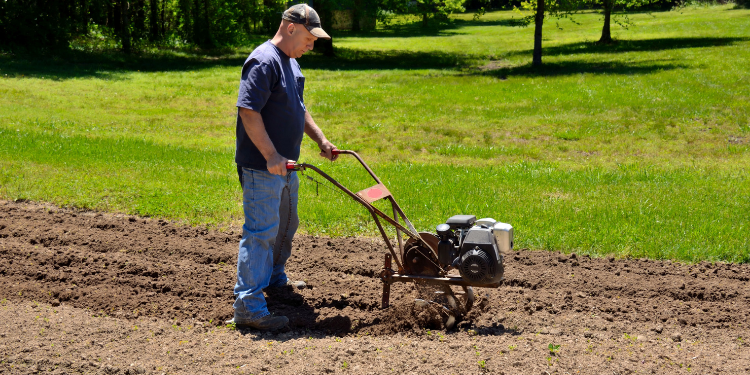
Step 4: Incorporate Some Fertilizer
During the tilling stage, you should also incorporate some fertilizer into the soil when you’re adding the organic matter. Try to use organic fertilizer such as animal manure or seaweed concentrate if you can.
This will also help to improve your existing soil as it breaks down but, more importantly, it will feed your grass as it starts to grow.
Step 4: Level The Soil
After you’ve added some organic material and fertilizer into your existing soil, or, you’ve added some purchased topsoil, you need to level out the soil so that it’s nice and even. You might need to do this several times.
It’s also a good idea to let the soil settle for a little while. This way you can see if there are any dips and bumps that you need to even out.
To get a nice flat, even surface, you can use a lawn roller for the final leveling.
Step 5: Select The Right Seed
It’s really important that you choose a good quality seed that’s right for your area. Don’t skimp on the cost if you want to end up with a full, lush lawn. You’ll find that with cheap seed, many of the seeds simply won’t germinate and this will leave you with bare patches.
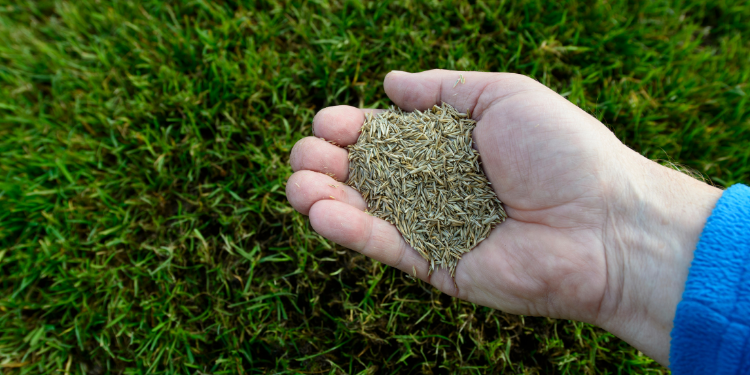
Step 6: Spread Your Seed
Once you’ve purchased the best quality seed that you can afford, it’s time to spread it over your prepared soil. You can either hand broadcast the seed for a small lawn area or use a seed spreader to get a really even coverage.
For the seed to germinate, it needs to be in contact with the soil. To achieve this, you either need to lightly rake it in or add a very thin layer of topsoil over the seed itself. Remember not to bury the seed too deep though. This is because the seed roots may run out of energy before the shoots can break through the soil.
Grass roots are only about two to three inches long so they don’t require a lot of topsoil to grow in.
It’s important to ensure your grass seed is relatively fresh, grass seed can go bad, so make sure your seed is in date.
Step 7: Add Water
Your newly planted grass seeds will need moisture to germinate. Therefore, you need to water the ground after the seeds have been planted. Do this early in the morning or at dusk before the sun goes down.
Make sure that you don’t overwater though. You don’t want to saturate the ground, just moisten it enough for the seeds to start germinating. You should keep up the twice daily watering until you start to see the grass sprouts coming up.
Once you’ve got a nice coverage of fresh, new grass coming up, you can reduce the frequency of the watering. However, you should water a little deeper at this stage.

Step 8: Mow Your New Lawn For The First Time
When the grass reaches a height of about three inches, you can give it a light mow. Set your mower height so that you’re only taking off about one third of the growth.
Make sure that your mower blades are really sharp so that they slice through the grass nice and cleanly.
Which Grasses Grow Best In Clay Soils?
How to grow grass in clay soil? Well, there are certain grass species that will adapt better to clay soils. You should definitely consider these as you’ll have a much better chance of success. Of course, the type you choose will also be determined by where you live and whether you grow a cool-season lawn or a warm-season one.
Here are some excellent grass seed for clay soil options:
- Bermuda grass
- Fescue grass
- Buffalo grass
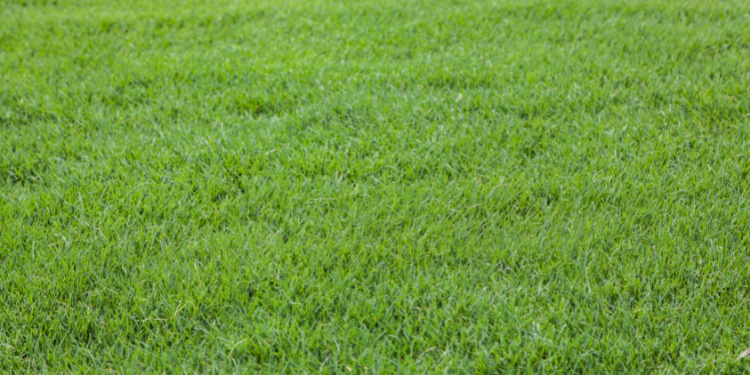
Frequently Asked Questions:
Will grass seed grow on hard soil?
You need to choose your seed variety carefully but it may take some time to achieve a good looking lawn.
Will grass seed grow if not covered with dirt?
Yes, it will grow but it’s advisable to cover the seed with a thin layer of topsoil, compost or even straw mulch.
How can I make grass seed grow faster?
To make your grass grow faster, it’s advisable to fertilize directly after you plant the seeds.
What is the quickest growing grass seed?
For warm climates, try Bermuda grass. But, for cold climates, Ryegrass is better.
Can grass grow in clay soil?
The answer to this question is yes, grass can grow in clay soil. However, you need to make sure that your grass will be able to thrive in this type of environment. It is important to make sure that the clay soil is properly aerated.
Final Thoughts
If you’ve ended up with hard clay soil, you can still grow a lush, green lawn. This will require a little work in preparing and improving the soil, but it will be worth it in the long run. Once you’ve put in all the effort to improve your soil, you’ll be richly rewarded with a beautiful green lawn to enjoy all summer long.
The most important step to improving your soil is to open it up to create air pockets. This will involve aerating the soil, tilling it and adding some additional organic matter. Alternatively, you can add a layer of topsoil to cover up the hard dirt, but make sure you aerate first.
If your soil is particularly compacted, it’s important to remember that you should aerate your lawn at least once a year. Then, you can top dress it with a thin layer of compost or some top quality topsoil. Over time, all this added organic matter will break down and actually improve your once hard and compacted soil.
Then, you can sit back and enjoy the beautiful, lush green lawn that you’ve worked so hard to achieve.

